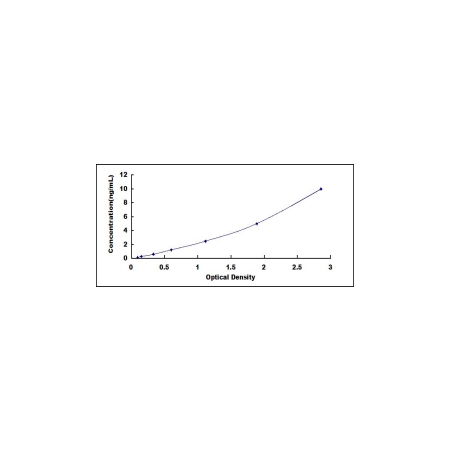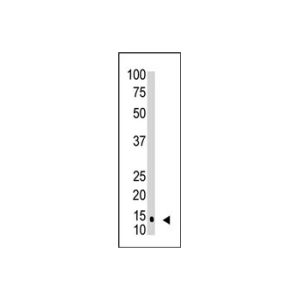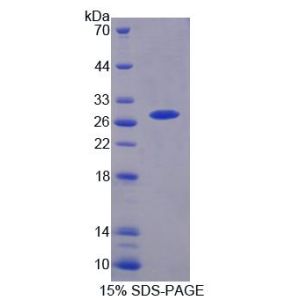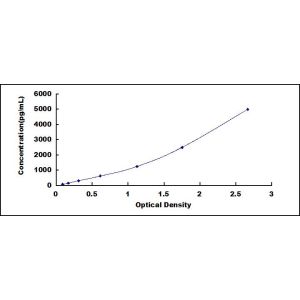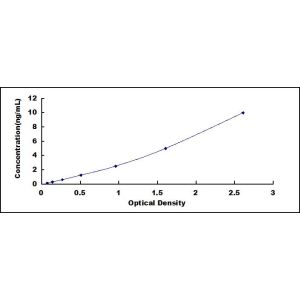SUMO1 ELISA Kit (Human)
Referencia OKCD00491
embalaje : 96Wells
Marca : Aviva Systems Biology
| Datasheets/Manuals | Printable datasheet for SUMO1 ELISA Kit (Human) (OKCD00491) |
|---|
| Predicted Species Reactivity | Homo sapiens|Human | ||||||||||||||||||||||
|---|---|---|---|---|---|---|---|---|---|---|---|---|---|---|---|---|---|---|---|---|---|---|---|
| Application | ELISA-Sandwich | ||||||||||||||||||||||
| ELISA Kit Detection Method | Colorimetric | ||||||||||||||||||||||
| ELISA Kit Duration | 3h | ||||||||||||||||||||||
| ELISA Kit Principle | The test principle applied in this kit is Sandwich enzyme immunoassay. The microtiter plate provided in this kit has been pre-coated with an antibody specific to Small Ubiquitin Related Modifier Protein 1 (SUMO1). Standards or samples are then added to the appropriate microtiter plate wells with a biotin-conjugated antibody specific to Small Ubiquitin Related Modifier Protein 1 (SUMO1). Next, Avidin conjugated to Horseradish Peroxidase (HRP) is added to each microplate well and incubated. After TMB substrate solution is added, only those wells that contain Small Ubiquitin Related Modifier Protein 1 (SUMO1), biotin-conjugated antibody and enzyme-conjugated Avidin will exhibit a change in color. The enzyme-substrate reaction is terminated by the addition of sulphuric acid solution and the color change is measured spectrophotometrically at a wavelength of 450nm +/- 10nm. The concentration of Small Ubiquitin Related Modifier Protein 1 (SUMO1) in the samples is then determined by comparing the O.D. of the samples to the standard curve. | ||||||||||||||||||||||
| ELISA Kit Range | 0.156-10ng/mL | ||||||||||||||||||||||
| ELISA Kit Reproducibility | Intra-assay Precision (Precision within an assay): 3 samples with low, middle and high level Small Ubiquitin Related Modifier Protein 1 (SUMO1) were tested 20 times on one plate, respectively. Inter-assay Precision (Precision between assays): 3 samples with low, middle and high level Small Ubiquitin Related Modifier Protein 1 (SUMO1) were tested on 3 different plates, 8 replicates in each plate. CV(%) = SD/meanX100 Intra-Assay: CV<10% Inter-Assay: CV<12% | ||||||||||||||||||||||
| ELISA Kit Component |
| ||||||||||||||||||||||
| Reconstitution and Storage | -20°C|2°C to 8°C | ||||||||||||||||||||||
| Sample Type | Tissue homogenates, cell lysates and other biological fluids. | ||||||||||||||||||||||
| Sensitivity | < 0.054 ng/mL | ||||||||||||||||||||||
| Specificity | This assay has high sensitivity and excellent specificity for detection of Small Ubiquitin Related Modifier Protein 1 (SUMO1). No significant cross-reactivity or interference between Small Ubiquitin Related Modifier Protein 1 (SUMO1) and analogues was observed. | ||||||||||||||||||||||
| Assay Info | Assay Methodology: Quantitative Sandwich Immunoassay |
| Gene Symbol | SUMO1 |
|---|---|
| Gene Full Name | small ubiquitin like modifier 1 |
| Alias Symbols | DAP1, GAP modifying protein 1, GAP-modifying protein 1, GMP1, OFC10, PIC1, SENP2, sentrin, small ubiquitin-related modifier 1, SMT3, SMT3 homolog 3, SMT3 suppressor of mif two 3 homolog 1, SMT3C, SMT3H3, ubiquitin-homology domain protein PIC1, ubiquitin-like protein SMT3C, ubiquitin-like protein UBL1, UBL1. |
| NCBI Gene Id | 7341 |
| Protein Name | Small ubiquitin-related modifier 1 |
| Description of Target | Ubiquitin-like protein that can be covalently attached to proteins as a monomer or a lysine-linked polymer. Covalent attachment via an isopeptide bond to its substrates requires prior activation by the E1 complex SAE1-SAE2 and linkage to the E2 enzyme UBE2I, and can be promoted by E3 ligases such as PIAS1-4, RANBP2 or CBX4. This post-translational modification on lysine residues of proteins plays a crucial role in a number of cellular processes such as nuclear transport, DNA replication and repair, mitosis and signal transduction. Involved for instance in targeting RANGAP1 to the nuclear pore complex protein RANBP2. Covalently attached to the voltage-gated potassium channel KCNB1; this modulates the gating characteristics of KCNB1 (PubMed:19223394). Polymeric SUMO1 chains are also susceptible to polyubiquitination which functions as a signal for proteasomal degradation of modified proteins. May also regulate a network of genes involved in palate development. Covalently attached to ZFHX3 (PubMed:24651376). |
| Uniprot ID | P63165 |
| Protein Accession # | NP_001005781 |
| Nucleotide Accession # | NM_001005781.1 |
| Protein Size (# AA) | 101 |




